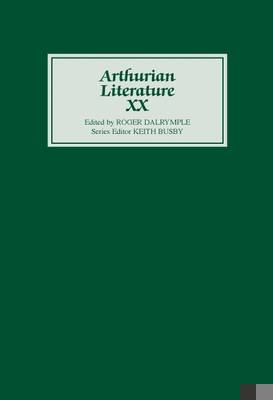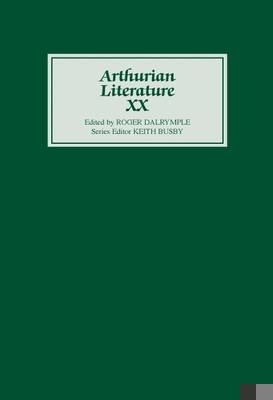
Je cadeautjes zeker op tijd in huis hebben voor de feestdagen? Kom langs in onze winkels en vind het perfecte geschenk!
- Afhalen na 1 uur in een winkel met voorraad
- Gratis thuislevering in België vanaf € 30
- Ruim aanbod met 7 miljoen producten
Je cadeautjes zeker op tijd in huis hebben voor de feestdagen? Kom langs in onze winkels en vind het perfecte geschenk!
- Afhalen na 1 uur in een winkel met voorraad
- Gratis thuislevering in België vanaf € 30
- Ruim aanbod met 7 miljoen producten
Zoeken
Omschrijving
'Arthurian Literature' continues the policy of alternating themed issues and miscellanies. This varied collection includes studies of major Arthurian works and authors in Old French, Middle High German, Middle English, and of one important novel by C.S. Lewis. A controversial textual crux in Chrétien's Yvain, debated vigorously by scholars in the late 1980s, is revisited, while the narrative function of clothing in Chrétien's romances comes under review. An enigmatic and linguistically difficult passage from 'Der jüngere Titurel' is translated and discussed, and an article on 'Der arme Heinrich' studies this pious tale in the context of its generic affiliations: while not strictly speaking an Arthurian romance, it deserves consideration here as a work of one of medieval Germany's most significant writers of Arthurian romance. There is discussion of Thomas Chestre's adoption of the lai as a vehicle for social criticism in his Middle English adaptation of Marie de France's 'Lanval'; the evolution of Arthurian romance in medieval England is also the primary concern in a study of 'The Awntyrs off Arthure'. The figure of Arthur himself is central to an examination of the Middle English Prose 'Brut', and the delicate political implications of Malory's 'Morte Darthur' are explored. Finally, C.S. Lewis's transformation and use of the figures of Uther Pendragon and Merlin in 'That Hideous Strength' is explored. Contributors: RICHARD BARBER, JANE DEWHURST, TAMAR DRUKKER, CYRIL EDWARDS, DINA HAZELL, DONALD KENNEDY, GERALD SEAMAN, KRISTA SUE-LO-TWU, JANINA P. TRAXLER, MONICA L. WRIGHT.
Specificaties
Betrokkenen
- Uitgeverij:
Inhoud
- Aantal bladzijden:
- 217
- Taal:
- Engels
- Reeks:
- Reeksnummer:
- nr. 20
Eigenschappen
- Productcode (EAN):
- 9780859917988
- Verschijningsdatum:
- 30/10/2003
- Uitvoering:
- Hardcover
- Formaat:
- Genaaid
- Afmetingen:
- 179 mm x 227 mm
- Gewicht:
- 639 g

Alleen bij Standaard Boekhandel
+ 354 punten op je klantenkaart van Standaard Boekhandel
Beoordelingen
We publiceren alleen reviews die voldoen aan de voorwaarden voor reviews. Bekijk onze voorwaarden voor reviews.








